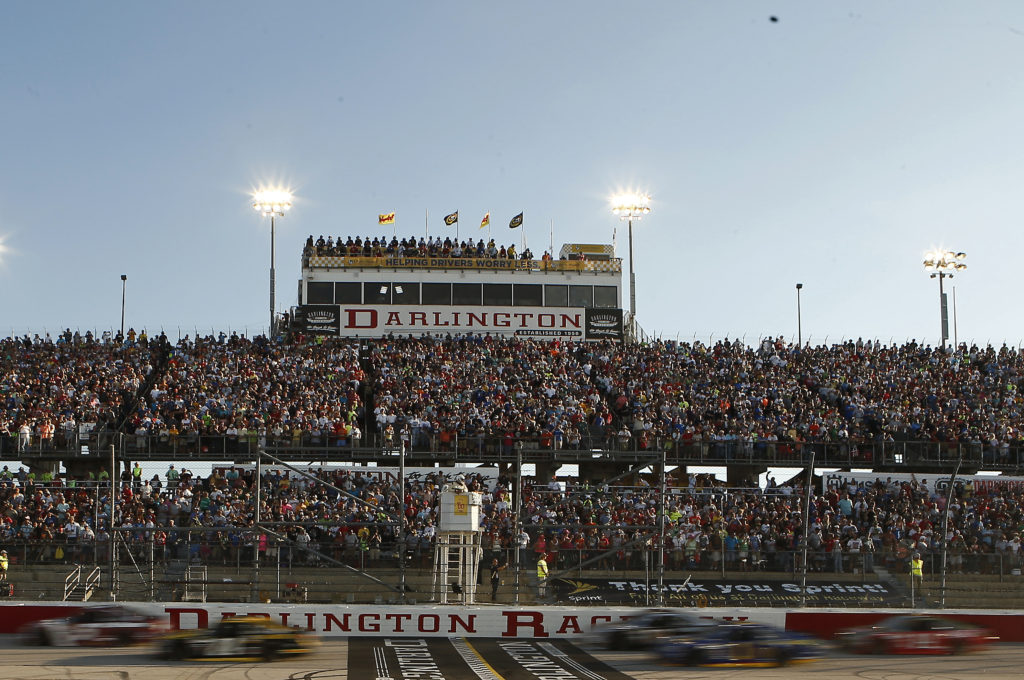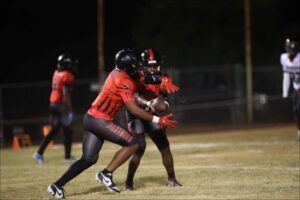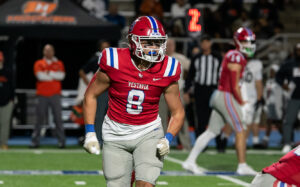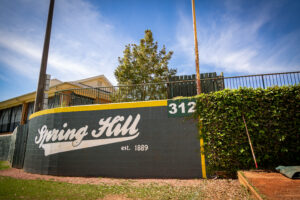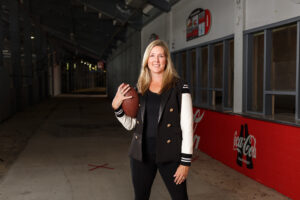It’s the NASCAR track so steeped in tradition that it has two nicknames. Darlington Raceway, the 1.366-mile layout carved into the South Carolina countryside, is known as either “The Lady in Black” or “The Track Too Tough to Tame.” And what it’s called often depends on each individual driver’s point of view.
Those who win on what is considered to be NASCAR’s first superspeedway (anything longer than 1 mile) certainly feel like they have been kissed by a beautiful woman. Those who don’t often believe the track is to blame. Either way, it has long been the site of some of NASCAR’s most exciting, most memorable racing.
First and foremost on that list is the 2003 Carolina Dodge Dealers 400 and a finish between Kurt Busch and Ricky Craven that remains, quite simply, the closest in NASCAR history. Busch and Craven dueled over the final laps and came through Turn 4 on the 293rd and last lap door-to-door, battering one another across the finish line and beyond. As they took the checkers, it was too close to call with the naked eye, but the scoring pylon quickly flashed 32, signaling that Craven had posted one of only two victories in his 11-year, 278-race NASCAR career.

When they did the math, Craven had won by .0002 (that’s two ten thousandths) of a second.
“I emptied the tank,” the Newburgh, Maine, driver said. “I gave everything I had. I remember every part of it. I remember that I didn’t lift, and I felt like we were going to wreck. I guess by all measures we did.”
The volatile Busch didn’t erupt like Mount St. Helens over the bitter pill as many expected, but, instead came to Victory Lane to congratulate Craven and tell him “that was awesome!”
“I was defeated by a guy who outsmarted me, and there was the respect side of it, too,” Busch said. “It was just two true racers, and we threw everything and the kitchen sink at each, but we didn’t wreck each other. And I liked that. It was OK to lose because of the respect we had for each other on the track.”
The .0002-second margin of victory mark was later tied by Jimmie Johnson in edging Clint Bowyer in the 2011 Aaron’s 500 at Talladega Superspeedway. But something about a nice guy like Craven winning a showdown with the guy in the black hat on “The Lady in Black” will always rank this one among the sweetest of them all in NASCAR annals.
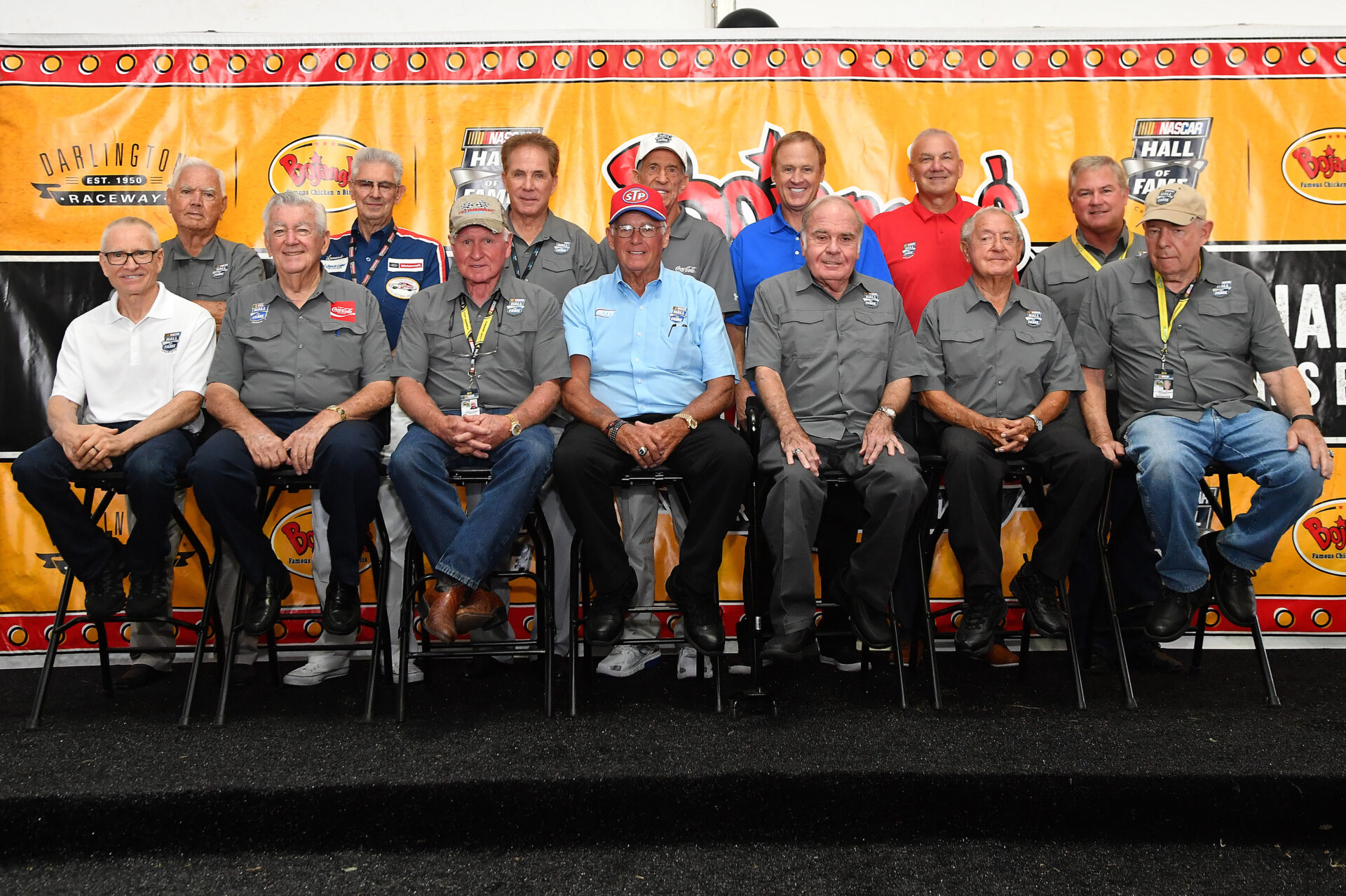
HISTORY OF DARLINGTON
Harold Brasington was a racer who retired in the late 1940s to concentrate on farming and a construction business. While attending the 1948 Indianapolis 500, Brasington decided that if Indy Speedway owner Tony Holman could do it there, he could do it back home in Darlington, S.C., too. So he bought 70 acres of what had been cotton and peanut fields from farmer Sherman Ramsey and began building a racetrack.
As part of the deal, Brasington promised Ramsey he wouldn’t disturb a minnow pond on the west side of Ramsey’s remaining property. So he was forced to build an egg-shaped oval track with one corner tighter, narrower and more steeply banked than the others.
The track was finished in 1950, and Brasington made a deal with NASCAR founder Bill France, Sr., whom he had competed against on the Daytona Beach Road Course and other dirt tracks across the country, to run a 500-miler on Labor Day. That first race offered a record purse of $25,000, attracted more than 80 entrants and was won by Johnny Mantz in a car owned by France.
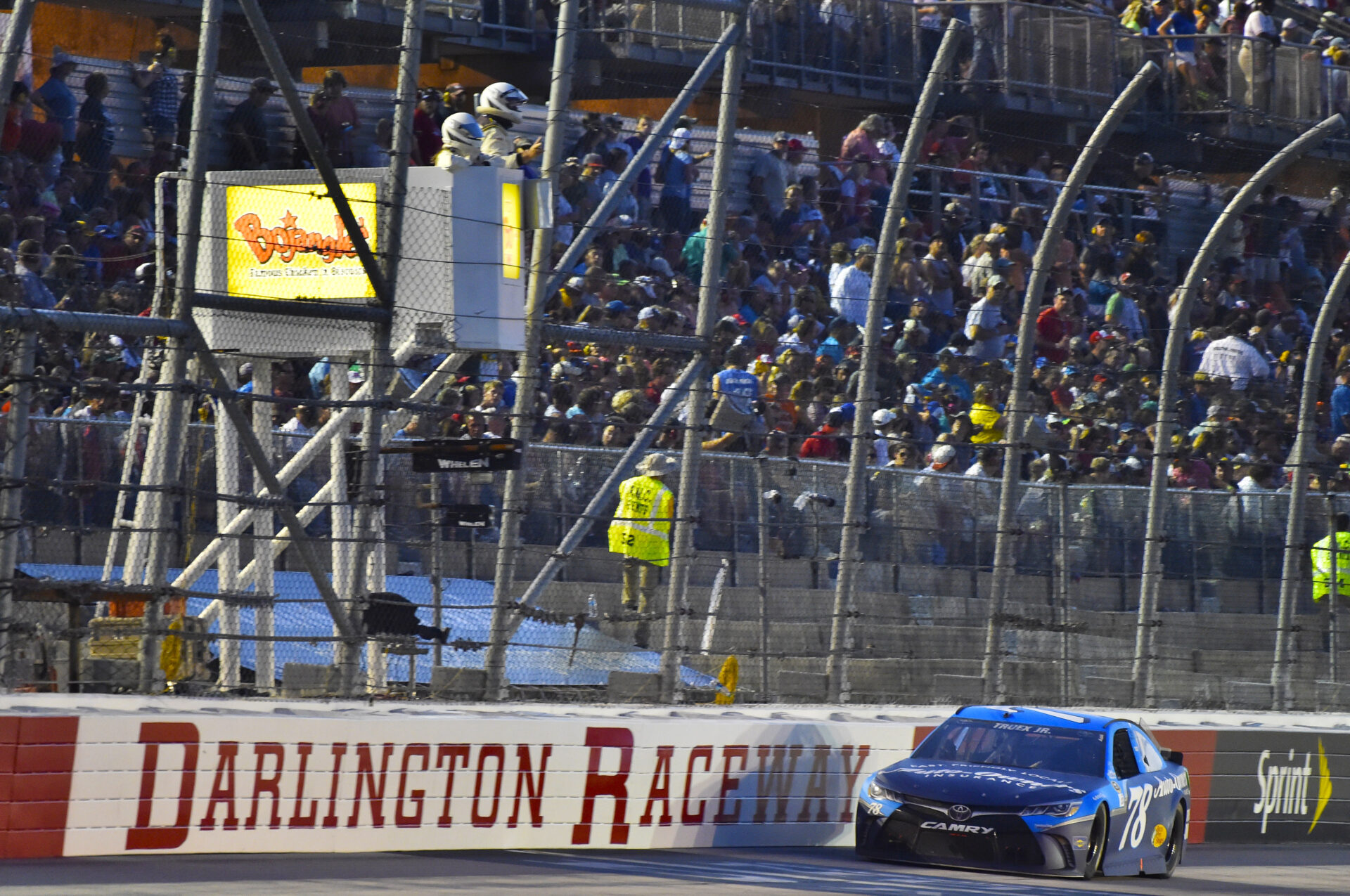
NOTEWORTHY
Darlington Raceway is supposedly called “The Lady in Black” because, in the early years, the maintenance crew would cover the entire track with fresh asphalt sealant the night before a race, making the racing surface dark black the next day.
NOTEWORTHY II
Drivers who hit the wall are said to have earned their “Darlington Stripe” because of the paint that is taken off the right side of their car by the impact.
NOTEWORTHY III
From 2005-2014, the Southern 500 was run in the spring (nine times in May and once in April) instead of its traditional Labor Day weekend date. Since it moved back to that September spot on the NASCAR Monster Energy Cup Series schedule in 2015, the track has hosted what is called Throwback Weekend, which celebrates the sport’s history by bringing back many NASCAR Hall of Famers and other racing legends to participate in various activities throughout the weekend. It has quickly become one of the most popular promotions of the entire season on the NASCAR circuit.
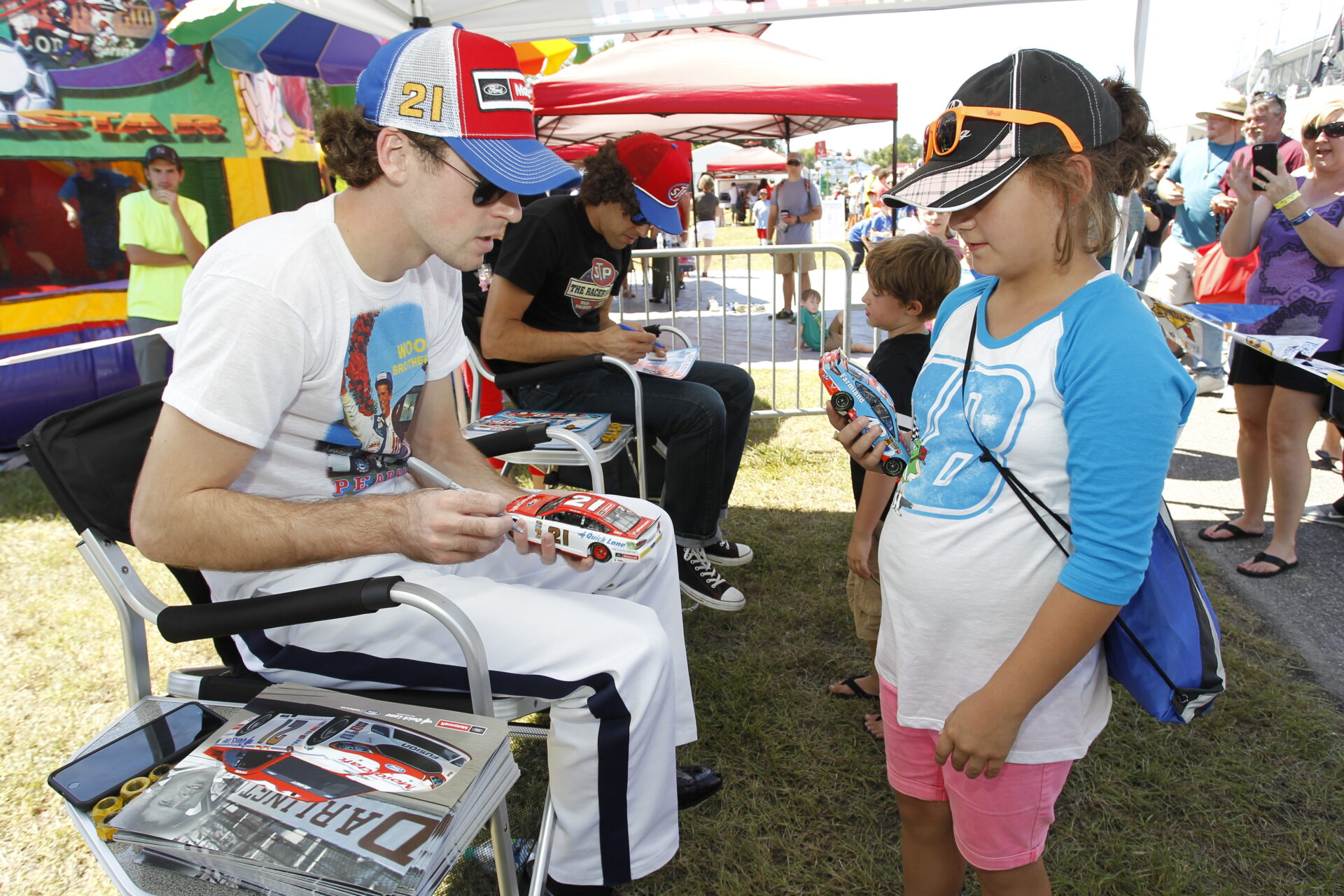
KEY STATS
- Races run, 114
- Most wins, David Pearson, 10
- Most Top 5s, Richard Petty, 25
- Most Top 10s, Bill Elliott, 35
- Most starts, Richard Petty, 65
- Most poles won, David Pearson, 12
- Most laps completed, Ricky Rudd, 17,582
- Most laps led, Dale Earnhardt, 2,648
SAY WTalegateT?
NASCAR Hall of Famer Ned Jarrett’s margin of victory in the 1965 Southern 500 was 14 laps. H&A

